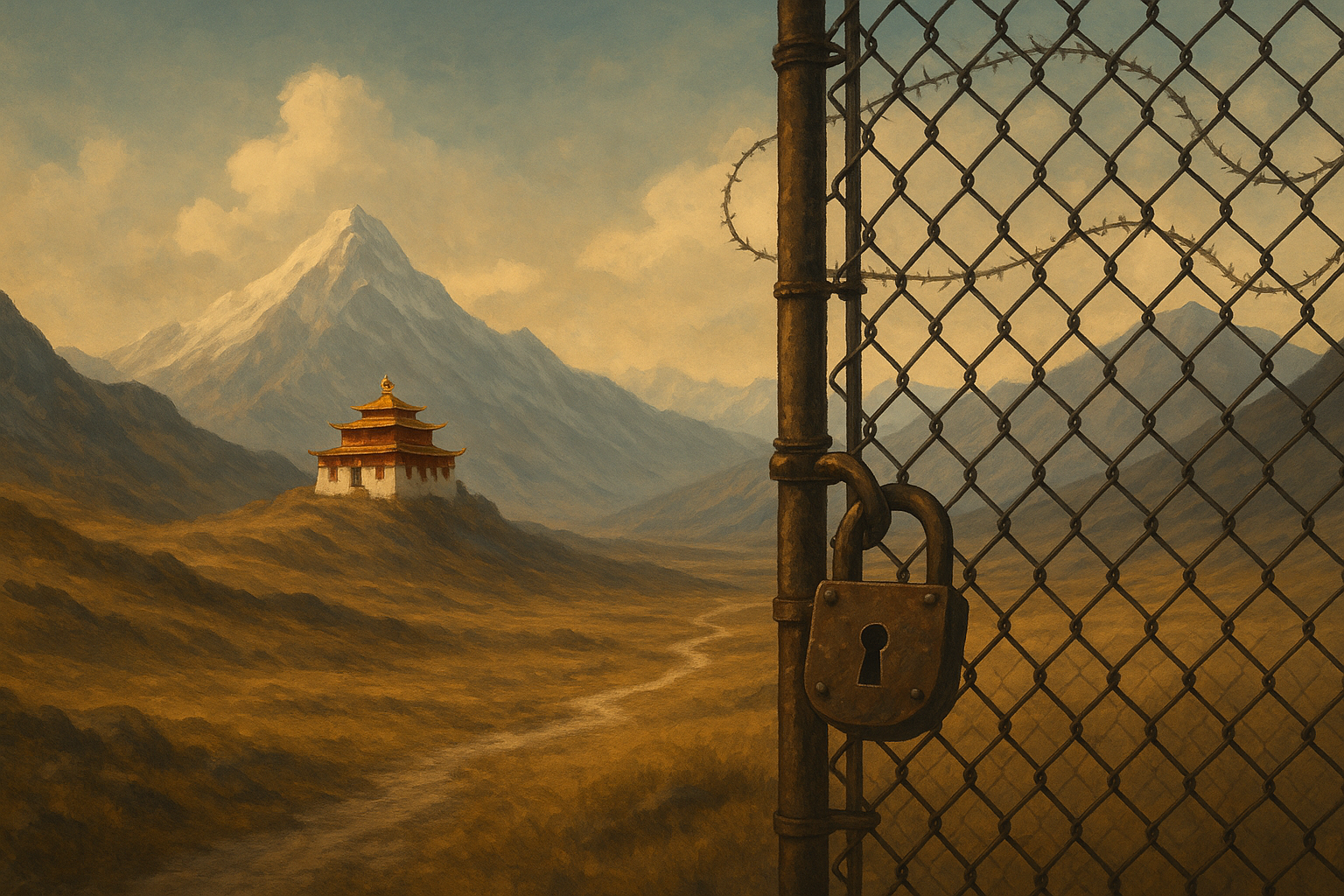On 25 April 1995, Gedhun Choekyi Nyima turned six years old. Just three days after being recognised as the 11th Panchen Lama by the Dalai Lama in 1995, Nyima was taken by Chinese authorities. He and his family have not been seen publicly for 30 years, prompting the Human Rights Watch (HRW) to call him “the world’s youngest political prisoner”.
Gedhun Choekyi Nyima is the Panchen Lama, the second-highest authority in Tibetan Buddhism after the Dalai Lama. To many Tibetan people, he is a figure who commands deep respect and reverence. To the Chinese government, which has occupied Tibet since invading it in 1950, the young Panchen Lama was a potential threat to their rule.
Perhaps his most important role is in recognising the next reincarnation of the Dalai Lama, who then, in turn, finds the reincarnated Panchen Lama. This tradition has endured for centuries. The Panchen Lama and the Dalai Lama, Tibet’s religious leader, have historically played key roles in recognising each other’s successor.
The previous Panchen Lama (Lobsang Trinley Lhundrup Choekyi Gyaltsen) spoke out against Chinese rule many times and wrote a report chronicling Tibet’s famines in the 1960s. As a result, he spent more than eight years in jail and died in suspicious circumstances in 1989.
In 1995, a list of possible candidates for the next Panchen Lama was sent to the Dalai Lama (living in exile in India), and on 15 May he announced that Gedhun had been recognised as the 11th Panchen Lama. Two days later, the Chinese government abducted the child and his family. None of them has ever been seen or heard from again.
Six months after Gedhun Choekyi Nyima’s abduction, Chinese authorities announced that they had found the so-called “real” reincarnation of the Panchen Lama. They named Gyaltsen Norbu, a Tibetan boy and the son of two Communist Party members, as the Panchen Lama.
The Chinese government’s selection of the Panchen Lama laid bare their motivations in the kidnapping. Since his selection, Gyaltsen, who resides in Beijing, has only visited Tibet infrequently. His visits are carefully stage-managed and heavily policed. He is a member of the Chinese People’s Political Consultative Conference (CPPCC), a top advisory body to China’s government, and a senior figure in China’s state-run Buddhist Association. Then, in a 2015 speech, he vowed to uphold “national unity”, the Chinese government’s term for opposing any change in Tibet’s status.
The abduction and replacement of the Panchen Lama is part of China’s efforts to ‘stabilise’ Tibet, by controlling its religion and breaking the Dalai Lama’s influence. Not only are they attempting to use their puppet Panchen Lama to control and influence Tibetans today, but when the time comes to find the reincarnation of the Dalai Lama they will use him to try and legitimise the appointment of their own pro-China candidate. For his role as a political tool, Gyaltsen Norbu is known by the Tibetans as ‘Panchen Zuma’, meaning ‘false Panchen’.
In May 2025, on the 30th anniversary of his disappearance, Human Rights Watch (HRW) and various US officials renewed calls for access to Nyima. HRW and other groups view the abduction as part of China’s systematic effort to control Tibetan religious affairs and eliminate Tibetan cultural identity. This includes enforcing state-sanctioned methods for recognising reincarnated lamas.
HRW and other groups view the abduction as part of China’s systematic effort to control Tibetan religious affairs and eliminate Tibetan cultural identity. This includes enforcing state-sanctioned methods for recognising reincarnated lamas.
In their statement, HRW called for the immediate release of Gedhun Choekyi Nyima and his parents. It also exhorted governments worldwide, particularly those with Buddhist populations, to demand action from China. It further sought to allow UN monitors, independent human rights organisations, and media access to Tibetan areas.
The US government officials have periodically called for the release of the Panchen Lama. In May 2025, US Senator Marco Rubio released a statement on the social media platform X (formerly Twitter), marking the 30th anniversary of the disappearance and demanding his release.
However, Beijing has consistently refused requests for proof of the Panchen Lama’s condition or location, claiming in 2015 that he was “living normally” and did not wish to be disturbed. The control of the Panchen Lama’s reincarnation is viewed as crucial to China’s ability to influence the succession of the next Dalai Lama, the highest spiritual figure in Tibetan Buddhism. The Dalai Lama has stated that his successor would be born in the “free world”, while China insists it will choose the next one. Will the international agencies and governments be able to secure the release of Panchem Lama? Only time will tell.

